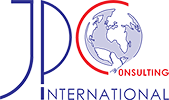
How to measure inclusion? Measure accessibility!
Many reports published by companies on their DEI strategy highlight the value they attach to inclusion. However, their examples of inclusion are usually statistics representing the percentages of women and different ethnic backgrounds in the workforce. In our view these figures illustrate diversity and not inclusion.
Diversity is easier to measure than inclusion or equity and this explains the current focus on numbers when evaluating inclusion. This approach can be misleading as high diversity percentages need not mean the company has an inclusive culture. After all, diversity at entry level is usually not sustained in equal measure to higher levels in the organisation.
A narrow emphasis on diversity numbers can lead to a backlash against DEI, for example accusations of reverse discrimination. This in turn can harm inclusion and employees who aren’t made to feel welcome will move on as soon as a better opportunity arises.
A vastly overlooked aspect of inclusion is accessibility. We believe that accessibility is a cornerstone of successful inclusion. Without accessibility the concept of inclusion is diminished as a significant percentage of the population is excluded. 20 % of the population in the E.U. has a disability.
Many disabilities are not visible such as restricted vision, dyslexia, anxiety, ADHD, chronic pain, PTSS, hearing loss and autism. At all levels in business, less obvious disabilities are often not disclosed to employers and colleagues for fear of being stigmatised and jeopardising career development. Your company, supply chain and market will have many more people with a disability than you estimate.
A company that propagates DEI in the context of ESG reporting cannot claim that accessibility issues do not apply to them. A truly inclusive company invests in willingly providing adaptations that allow employees with disabilities to thrive, ensures the accessibility of the company’s digital information, their physical spaces and events they host or sponsor. This accessibility can be measured and it is a valuable indicator of an inclusive culture!
Please contact us to increase your company’s accessibility and inclusion. Not paying attention to accessibility may be considered a self-imposed limitation to growth.
Caroline Allertz and Janet Poot
Business Accessibility Experts
















